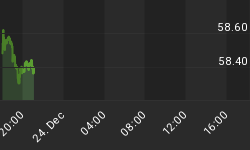There are two kinds of bulls: 1) there are those bulls who are intent on squeezing every last percentage point from this rally and who believe they can find the exits when the music finally stops; and 2) then there are those bulls who continue to have high expectations that the current market environment will yield strong returns. The latter type of bulls are unlikely to realize strong gains without a significant pullback, and by significant I mean that the pullback should get investors to think that the market is rolling over to such a degree that the current cyclical highs will never be revisited. The former type of bulls are likely overestimating their ability to get to the exits or identify the top before the next trader. Either way, complacency reigns as they don't ring a bell at the top.
The "Dumb Money" indicator, which is shown in figure 1, looks for extremes in the data from 4 different groups of investors who historically have been wrong on the market: 1) Investor Intelligence; 2) Market Vane; 3) American Association of Individual Investors; and 4) the put call ratio. The "Dumb Money" indicator shows that investors remain extremely bullish.
Figure 1. "Dumb Money" Indicator/ weekly
The "Smart Money" indicator is shown in figure 2. The "smart money" indicator is a composite of the following data: 1) public to specialist short ratio; 2) specialist short to total short ratio; 3) SP100 option traders. The Smart Money indicator is neutral to bearish.
Figure 2. "Smart Money" Indicator/ weekly
Figure 3 is a weekly chart of the S&P500 with the InsiderScore "entire market" value in the lower panel. Due to the start of earnings season, insider trading volumes remain light.
Figure 3. InsiderScore Entire Market/ weekly
Figure 4 is a daily chart of the S&P500 with the amount of assets in the Rydex Money Market Fund. When the value is low, investors are fully invested and remain complacent; when the value is high, investors are fearful and seeking safety of the money market fund. The current value is the lowest value since the March, 2009 rally began.
Figure 4. S&P500/ Rydex Money Market Fund/ daily















